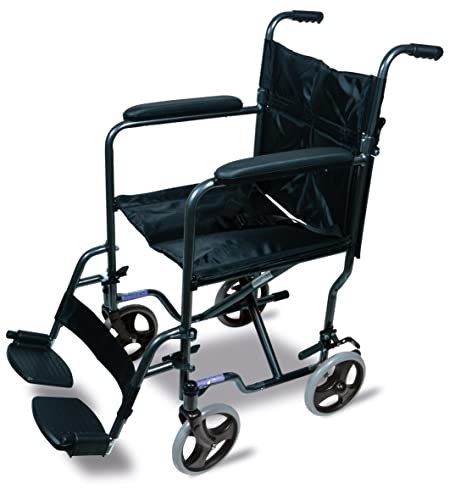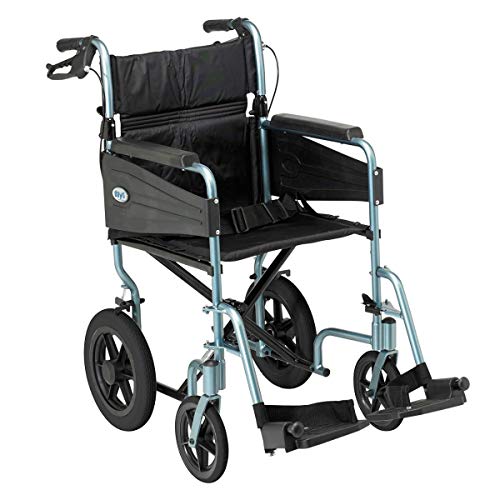The 10 Most Terrifying Things About Folded Wheelchair
페이지 정보

본문
 Buying a Folded Wheelchair
Buying a Folded WheelchairFolding wheelchairs are great for those with small spaces or who are frequently traveling. This allows them to easily take their wheelchair on vacation with them or on public transport.
 Start by turning off the power and disconnecting the power (if applicable). To fold the chair, locate a safe place and remove any obstructions.
Start by turning off the power and disconnecting the power (if applicable). To fold the chair, locate a safe place and remove any obstructions.Seat and Handlebar
The handlebar of a chair can be folded easily by pulling a lever located on the back of the chair. The consumer can lower the footplates and then lift them up and allow for standing transfers. This is also useful for putting the chair underneath a table or desk. Some chairs have armrests that are removable to give them a more clean appearance and make it easier to transport the chair in smaller vehicles.
The first thing that consumers should do when preparing to fold a wheelchair is to ensure that all pins and locks are secured. This will stop the wheelchair from slipping in transport or causing damage to other objects in a car.
Most folding wheelchairs have an elongated cross-brace that collapses the frame when the sides are pushed together. There are other options available to fold a wheelchair, including scissor braces that fold the seat into half and "quick release axles" which make the chair easier to get into smaller spaces.
Before folding the wheelchair, it's important to check the chair for signs of wear. Also, make sure that you adjust the chair as needed. This will not only help to improve the lifespan of the chair but will also avoid any unexpected malfunctions that could occur during transport or storage.
Rigid Wheelchairs are made with solid frames and can be folded into a box for transport and storage. These are made of aluminum or titanium and have more responsiveness since they do not bend when the wheelchair is being pushed. This can decrease the amount of energy is required, and some users feel it gives them a better sense of control.
Before folding travel wheelchair a rigid wheelchair, the consumer must inspect the chair for any indications of wear or tear. They should also check whether any adjustments are required. The user can then determine whether the footplates should be raised or lowered and legrests can be adjusted. Before making any changes to the wheelchair, it is important to consult with an occupational therapist. This could impact the ability of the person to stand and transfer.
Uprights
The uprights are short arms that are situated in the middle of a wheelchair frame, beneath the point where the seat connects with the backrest. The uprights or hinges should be clearly labeled and typically a bit higher than armrests. It is essential to identify and align the different parts of the chair so that they are in the folded position you want them to be.
Wheelchairs that can be reduced in size to make them suitable for storage and transport are referred to as collapsible or folding wheelchairs. They are typically self-propelled and come with a foldable frame and backrest that can be folded to reduce the size and width. The steerable front wheel and rear load wheels are mounted on brackets that pivot on upper and lower bars of the sidewalls which also support the uprights.
When the chair is in a fully open position, the links 61, 60, and 62 (see Figs. The links 61,62 (see Figures. 2) of each slide are bent and the uprights 9 aren't able to be moved in relation to one another, even when the handles are raised. When the wheelchair is semi-folded the uprights are moved forward by moving the slides on the front and back axles, respectively.
If the seat's depth is too narrow it can cause the wheelchair user to sit in a wrong position and not be able to alleviate the pressure on their thighs. This can lead to pressure ulcers. To determine if the seat is deep enough you need to measure the distance from the backside of the pelvis to the onset of the pre-seat bone shelf.
After the wheelchair has been properly positioned, it should be locked and secured. This will help prevent any accidental injury or damage during transport and storage. The wheelchair should be inspected multiple times to ensure that the locking mechanism is working correctly. This is crucial for wheelchair users who have weak sensation in the thighs or toes as an unintentional movement during transport or storage can result in serious injury. Once the wheelchair is secured and secured and secured, it can be stored in its travel bag or container.
Seat and Backrest
The backrest and seat of a wheelchair are designed to provide stability, support, comfort and pressure relief. They also help to prevent ulcers, pressure sores and reduce discomfort for individuals who spend a lot of sitting. Backrests and seat cushions for wheelchairs are available in a range of shapes, sizes, fabrics and materials. Foam or air options are offered for comfort, and foam/air cushions that combine foam/gel and air are a more personalised solution that balances between stability and pressure redistribution.
The most suitable wheelchair for you depends on the environment you will be using it in and the personal needs you have. Your doctor will be able to guide you through this decision-making process and suggest the best model of wheelchair for you.
Wheelchairs that fold can be collapsed and can be reduced in size to make them suitable for storage or transport as well as travel. The majority of wheelchairs are designed with a "cross-brace", or the 'X" frame that allows them to fold in half when the sides are pushed together. More recently a scissor brace is being developed that allows chairs to be folded from the front and back instead of the side, which can save space.
Rigid Frame wheelchairs are non-folding and may require a big vehicle to transport them from one location to another. They are usually considered wheelchairs for athletes and young sports interested individuals, but can be used by anyone who requires more stability than a folding chair could provide.
Carbon fibre is a lightweight folding self propelled wheelchair and durable material which is utilized in a variety of wheelchairs. The use of this material could however add costs. Certain manufacturers have discovered that combining carbon fiber with titanium can reduce costs.
Wheelchairs that fold up can be stored in a closet, a store room or in the trunk of a car to transport patients to appointments with doctors, social events and family gatherings. They can even be used to vacation! Our engineers have also devised a unique solution known as "fold-forward rearrest" which can lower the height and make your wheelchair more compact folding wheelchair making it easier to move in smaller planes or vehicles with cargo holds.
Wheels
Wheels are the most important part in a wheelchair. This is particularly true for those who need mobility because of an illness that restricts their ability to walk or move around independently. For those with disabilities the quality of the wheels, tyres, and casters can make a big impact on their daily life. A good set of wheels can help them get where they want to go without feeling the rough edges of the pavement or bumps in the road.
Wheels for wheelchairs are made up of a tire, rim (and hand rims on manual chairs) and spokes, or mags, and hub. They can be made of either metal or plastic, depending on the type of wheel. A typical wheel can hold up to 300 pounds and weighs about 7.5 pounds.
Moving and storing the wheelchair can be difficult for some users, particularly when the wheels of the chair aren't foldable. Wheels that fold like the Morph Wheel by Vitamins Design, London, attempt to change this. The wheel folds into itself to use only 12 liters of space, less than the 22 liters it occupies when in its open position.
Invented by the same guy who created folding wheels for bicycles This new model is made up of the same central hub as well as six folding aluminum structures that take the place of traditional spokes. It also has an aluminum rim that is divided into six interlocking segments and covered in a length of foam-filled tire. The result is a wheel roughly half the size of a standard 24-inch wheelchair one.
It's still a prototype however, the wheel has already attracted the attention of the disability community. It was nominated for the Design Museum's Designs of the Year 2013 along with a library in South London and a stool made by magnets.
Although the wheels aren't readily accessible to all wheelchairs however, the designers behind them are working to bring them to market as soon as they can. The company utilized a focus group made up of wheelchair users to perfect the design. A pair of Morph Wheels costs around $950 and weighs more than other wheelchairs wheels. However, the wheels can fit into airline overhead bins and the tight spaces in rental cars, making travel easier for many wheelchair users.
- 이전글Many Of The Most Exciting Things That Are Happening With Treating ADD 24.12.27
- 다음글See What Car Keys Replacement Cost Tricks The Celebs Are Using 24.12.27
댓글목록
등록된 댓글이 없습니다.